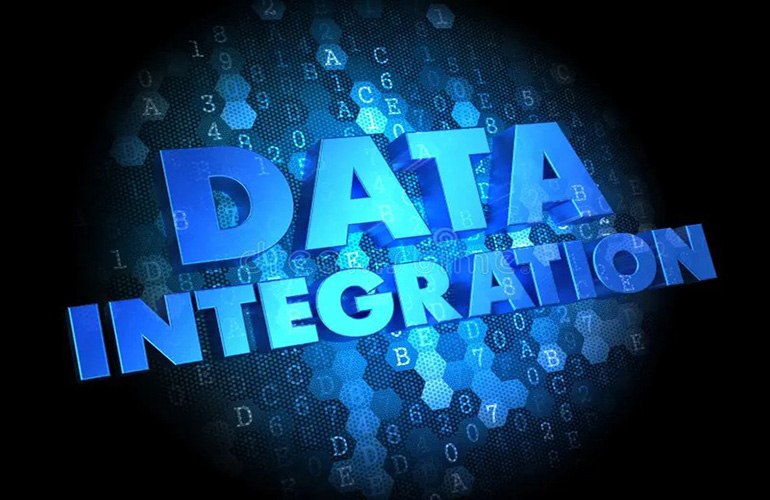
How AI Automates Automated Data Integration: A Comprehensive Guide
In the age of digital automated data integration is now the lifeblood of business, allowing everything from daily operations to longer-term strategic choices. However, the massive amount as well as the complexity has resulted in efficient management of data an overwhelming task. Traditional methods for AI data integration although essential are often affected with inefficiencies and errors made by hand. In this complete guide, we’ll examine the ways in which Artificial Intelligence (AI) is changing the landscape of data integration and bringing about a new age of efficient processes and improved efficiency.
Introduction to Automated Data Integration and AI
Automated Data Integration refers to that process whereby you combine data from different sources into a single report for analysis and use. Through the unification of information that is otherwise separated companies can tap into the power of data to extract information and make educated decisions.
In contrast, AI, particularly machine learning and natural language processing is rapidly changing the way businesses operate across all areas. In the case of data integration AI’s capabilities provide innovative solutions to conventional problems by automating complicated tasks, and ensuring more precise, consistent, as well as efficient transfer of data.
The Importance of AI Data Integration

Automated data integration practices are crucial to ensuring that you remain competitive in the current data-driven economy. Benefits are numerous that range from greater efficiency in operations to more informed business strategies.
Enhancing Data Accuracy and Consistency
A reliable and consistent set of information is crucial for making informed decisions. Without integration, data could be incorrect, incomplete or duplicated across multiple systems, which can lead to expensive and inaccurate outcomes.
Improving Decision-Making Processes
The integration of data offers a comprehensive perspective of the business and is crucial for planning and forecasting strategic plans. It helps organizations identify potential opportunities, trends and risks with more transparency.
Increasing Operational Efficiency
Through the implementation of an automated integration of data, processes can be optimized, which reduces the amount of time and effort required to manage data across different systems.
AI-Powered Automation in Data Integration
Artificial Intelligence has brought about an era of automation for AI data integration, using platforms and tools that are able to intelligently manage tasks that were previously impossible or difficult for humans to handle efficiently.
Machine Learning Algorithms for Data Mapping
Machine learning algorithms can analyse and learn from patterns in data which makes the initial set-up of AI data integration easier. These algorithms can recognize connections between data elements and systems, thereby automating the majority part of mapping.
Natural Language Processing for Data Transformation
Natural Language Processing (NLP) allows machines to comprehend human language, thereby making the process of data mapping and transformation more easy. With NLP it is possible for systems to “interpret” transformation rules, which allows them to transform and modify data with precision without manual programming.
Automated Data Cleansing and Deduplication
AI systems are able to automatically detect and fix issues with data quality like duplicates and inconsistencies. This process ensures only accurate, high-quality datasets are processed and analysed to improve the quality of the information used to make decisions.
Benefits of AI-Driven Data Integration for Data Analysts

The incorporation of AI into the management of data has profoundly affected analysts’ work and analysts, bringing time-saving benefits but without compromising quality.
Time-Saving Advantages
AI-powered data integration tools are able to handle and combine data more speed than their human counterparts, which can reduce overall timelines for projects.
Increased Accuracy in Data Analysis
Through automatizing the process of AI data integration AI reduces the risk of human error, and makes sure that analysts have reliable information that results in more precise analyses and better insight.
Enhanced Predictive Modeling Capabilities
The ability to access a larger and more accurate data set permits more sophisticated predictive models, which gives companies an advantage in their ability plan and forecast.
Benefits for IT Professionals
For IT professionals AI-based data integration provides a brand new collection of tools to effectively handle the challenges of modern data landscapes.
Reduced Manual Intervention
Automated AI systems need lower manual management, which allows IT personnel to concentrate on more strategic initiatives that can add value.
Improved System Compatibility
AI software is designed so that it can work with a variety of existing systems, thus reducing the difficulties associated with installation and management.
Enhanced Security Measures
AI-powered data integration can enhance security by detecting any anomalies which could indicate a violation or irregularity.
Benefits for Business Owners

From a strategic perspective the business owner can use AI for data integration in order to improve efficiency and gain a competitive edge.
Cost-Effectiveness
By automatizing various tasks for AI data integration, companies can dramatically reduce the operational cost as well as the overheads associated with manual work.
Faster Go-to-Market Strategies
Automated data integration speed up the process of developing and launching products which allows companies to launch new products to market quicker.
Competitive Advantage through Data-Driven Decision-Making
Businesses that harness AI for data integration are able to make more informed decisions based on data that is a major benefit in an ever-changing market.
Challenges and Considerations
While artificial intelligence for data integration has many benefits, it also has issues and concerns which must be acknowledged and taken care of.
Data Privacy and Security Concerns
Utilizing AI in the automated data integration requires careful monitoring of confidentiality and protocols that protect sensitive data from misuse or theft.
Integration with Existing Systems
The integration of AI-driven applications into existing systems for data management could pose technical difficulties in terms of compatibility and performance.
Staff Training and Skill Development
The use in the use of AI to integrate data requires employees to be trained in using new tools efficiently, as well in fostering a culture that encourages constant learning in order to keep pace with the latest technological advances.
Case Studies
To demonstrate the real-world effects that AI driven data processing can have on the real world we provide two case studies to illustrate the tangible benefits enjoyed by early adopters of the technology.
Retail Analytics Platform
A major retailer has established the AI powered data integration system to combine data from customer transactions as well as supply chain and even inventory system. The platform’s automation capabilities cut down the amount of time required to collect data and clean it which resulted in quicker better inventory insights, more accurate and a more efficient control of supply chains.
Financial Services Provider
A financial service provider has optimized its business processes through the implementation of an AI-driven, enterprise AI data integration system. The machine learning algorithms in the system automatically translated data from a variety of financial services and products and enabled the firm to provide more trustworthy informed, personalised recommendations to its clients.
Conclusion
AI’s importance in improving automated data integration can’t be overemphasized. It improves processes, gives useful insights and improve an organization’s overall data strategy. Businesses looking to maximise the value for their information, the blending of AI tools and techniques are not just beneficial, but becoming increasingly important.
Through careful planning, rigorous training, and a keen focus on innovation, businesses can benefit from the full potential in AI when it comes to data integration. As a result they can achieve an advantage in speed, accuracy and speed, as well as securing their position at the top of their respective industries.
FAQs
What is it that can AI improve the effectiveness of data integration?
AI makes use of the machine-learning process and also natural processing of language as along with other advanced methods to speed up complex tasks of automated data integration by minimizing the need for manual input, and accelerating the whole process.
Which are the major barriers in making use of AI to connect data?
The main problems are privacy and security issues with AI data integration existing systems, as well as the need for training of personnel and the development of their capabilities.
How should companies be doing to prepare to be ready for AI driven integrations of their data?
Businesses should conduct a thorough analysis of their data processing procedures and put in place strong security measures. They should also offer thorough training to those who handle the data and the integration of data, including automated technology. Furthermore, they should encourage an atmosphere of constant development and improvement.
Does AI serve as a replacement for data analysts and IT specialists for the field of data integration?
There’s no reason to state that AI can improve the work of professionals by handling routine tasks by using data, allowing them to concentrate on more intricate, strategic jobs that demand human judgement and oversight.



